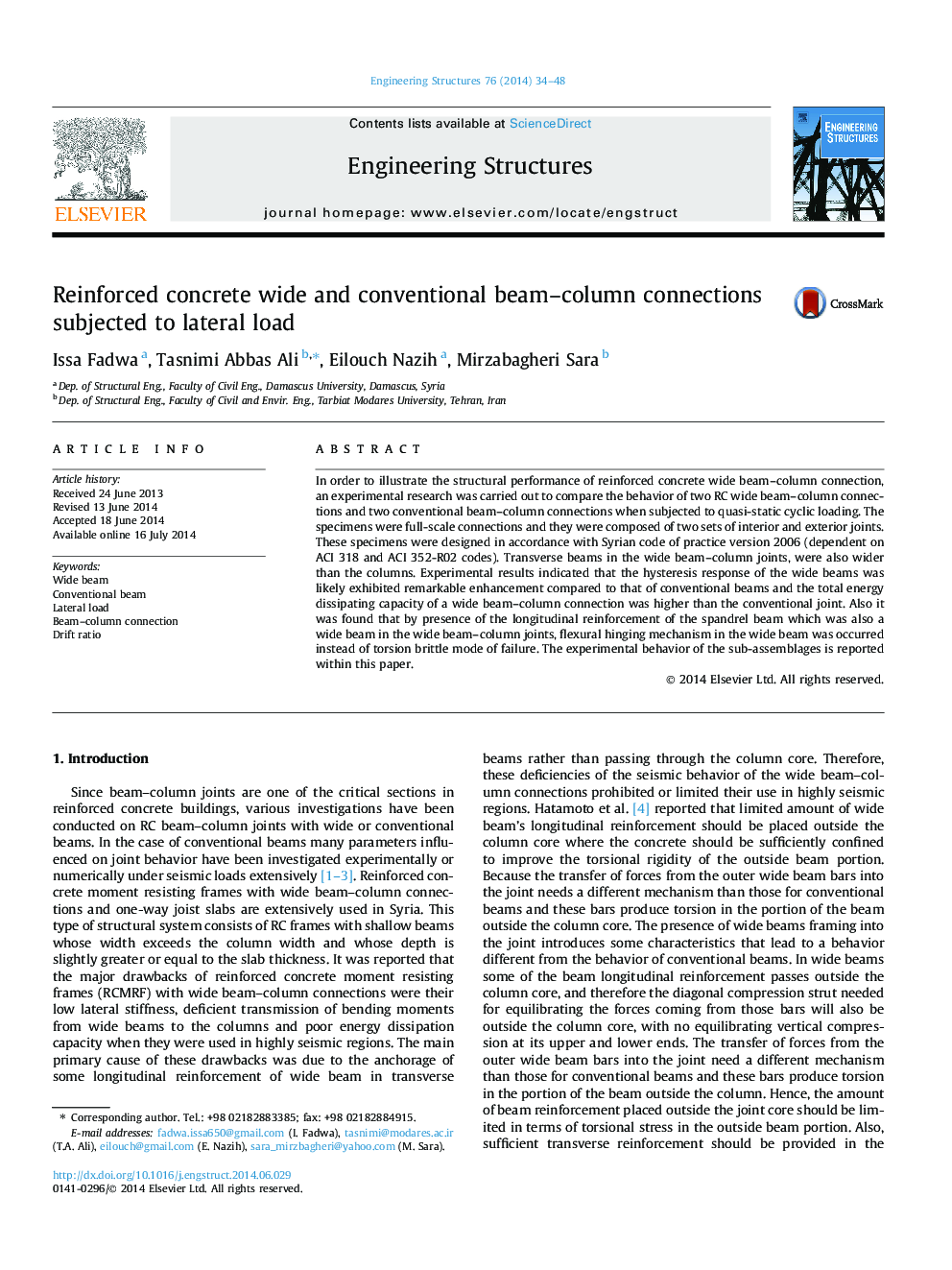| Article ID | Journal | Published Year | Pages | File Type |
|---|---|---|---|---|
| 266580 | Engineering Structures | 2014 | 15 Pages |
•The full-scale conventional beam–column connections are investigated for comparison.•All specimens were subjected to quasi-static cyclic loading.•The longitudinal bars of the spandrel beam changed torsional brittle mode of failure to a ductile flexural mode of failure.•Wide beam–column connections, perform quite well in carrying the horizontal lateral loads.•The design recommendation on the beam to column width ratio cannot guarantee the performance by itself.
In order to illustrate the structural performance of reinforced concrete wide beam–column connection, an experimental research was carried out to compare the behavior of two RC wide beam–column connections and two conventional beam–column connections when subjected to quasi-static cyclic loading. The specimens were full-scale connections and they were composed of two sets of interior and exterior joints. These specimens were designed in accordance with Syrian code of practice version 2006 (dependent on ACI 318 and ACI 352-R02 codes). Transverse beams in the wide beam–column joints, were also wider than the columns. Experimental results indicated that the hysteresis response of the wide beams was likely exhibited remarkable enhancement compared to that of conventional beams and the total energy dissipating capacity of a wide beam–column connection was higher than the conventional joint. Also it was found that by presence of the longitudinal reinforcement of the spandrel beam which was also a wide beam in the wide beam–column joints, flexural hinging mechanism in the wide beam was occurred instead of torsion brittle mode of failure. The experimental behavior of the sub-assemblages is reported within this paper.
